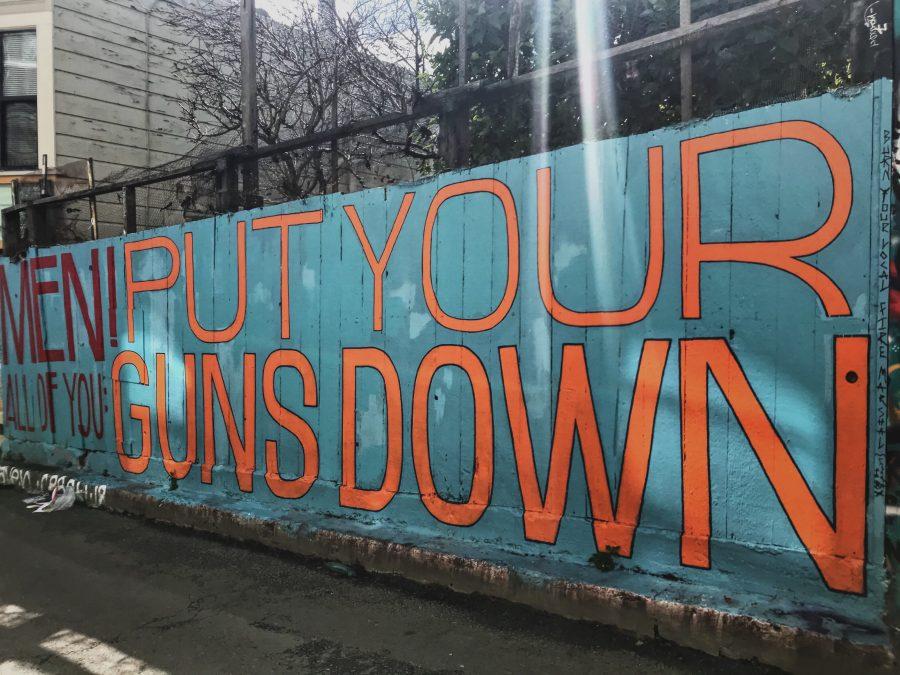It’s 1:01 p.m. on a Thursday afternoon and I am crouching in a closet. The lights are out and the blinds are drawn, covering every bit of window they can reach. My knees are pressed together, my ankles starting to go numb. My computer is sitting in the Media Arts Center atrium; a biology lab and an English essay await my return.
I was on the second floor of the MAC, working with a friend at a table after lunch. We had just sat down when our conversation was interrupted by a stampede of footsteps. We looked up, confused. This was more than just a late afternoon dash to class. The thundering continued, until the shouts reached us from downstairs. “Inside” and “classroom” and “gun!”
I have been crouching in this closet for 25 minutes now. There are seven other students in here with me. One is my friend. Another is a student in my English class. The rest are strangers. We discuss the details of what we know, swapping facts and rumors and assumptions. A man called the school half an hour ago, threatening violence. Although there was no report of a shooter on campus, a man a few towns over tried to buy a gun three days ago, saying he wanted to “shoot up a school.” Two days ago, a nearby high school evacuated after receiving a similar call. Yesterday, a girl in my town was raped at gunpoint; the suspect is still at large.
We will sign petitions, mail letters, join marches and write op-eds. We will talk about college and high school and parties and homework. We will continue to prepare for our future just as fiercely as we prepare for that future to be ripped away.
Last weekend I was in San Francisco at the March for Our Lives. The week before, I walked out of my class for a 17-minute protest. The week before that, I spent my lunch breaks writing letters to my senators. In this closet, we discuss our English essays and physics tests and bio labs. From among the muttered conversation, a voice emerges.
“Do you realize how f—— we’d be if there was an actual shooter?”
In this building, there are entire walls made of glass. There are only two flimsy chairs in the closet we are hiding in. They will not be enough to form a barricade, and we cannot stop anyone from barging in. There is nothing in this room that will stop a bullet.
We do what we can do. We sit. We wait. It has been close to an hour now. We have moved on to discussing video games and Netflix, and I curse myself for not thinking to bring my laptop or something to eat. Instead, we talk about the future. We scroll through Snapchat stories and status updates from classmates. We discuss prom dresses and compare environmental science programs at liberal arts colleges and universities. In a year we could all be in different states, or even on different continents.
“Maybe I’ll move to Australia,” the boy sitting across from me whispers. “Then maybe this s— wouldn’t happen.”
It is an hour and 30 minutes since the lockdown began, and we are released. We file out with cautious steps. Class will go on as usual. The school day will return to normal. We disperse, heading our separate ways when the bell rings.
Tomorrow we will mobilize. We will do what we have been doing for week after week after week. We will sign petitions, mail letters, join marches and write op-eds. We will talk about college and high school and parties and homework. We will continue to prepare for our future just as fiercely as we prepare for that future to be ripped away.
But for this long last stretch of childhood, our lives are dictated by someone else’s rules. The bell rings. We return to class. We learn. We study. And we wait for the day we get the chance to do more.
To learn more about your state’s gun control laws, visit Giffords Law Center to Prevent Gun Violence.
To learn more about gun control and how you can contribute, check out the following organizations:
Everytown for Gun Safety
Coalition to Stop Gun Violence
Violence Policy Center

